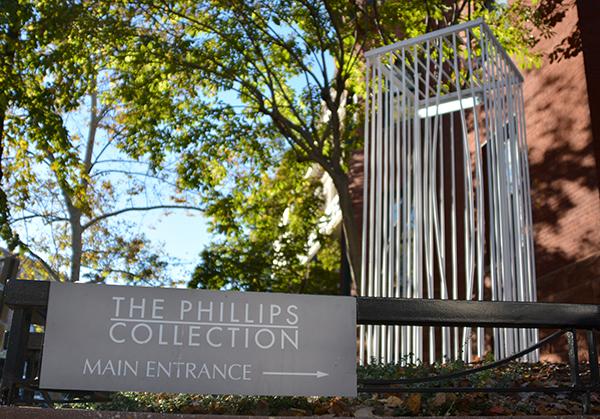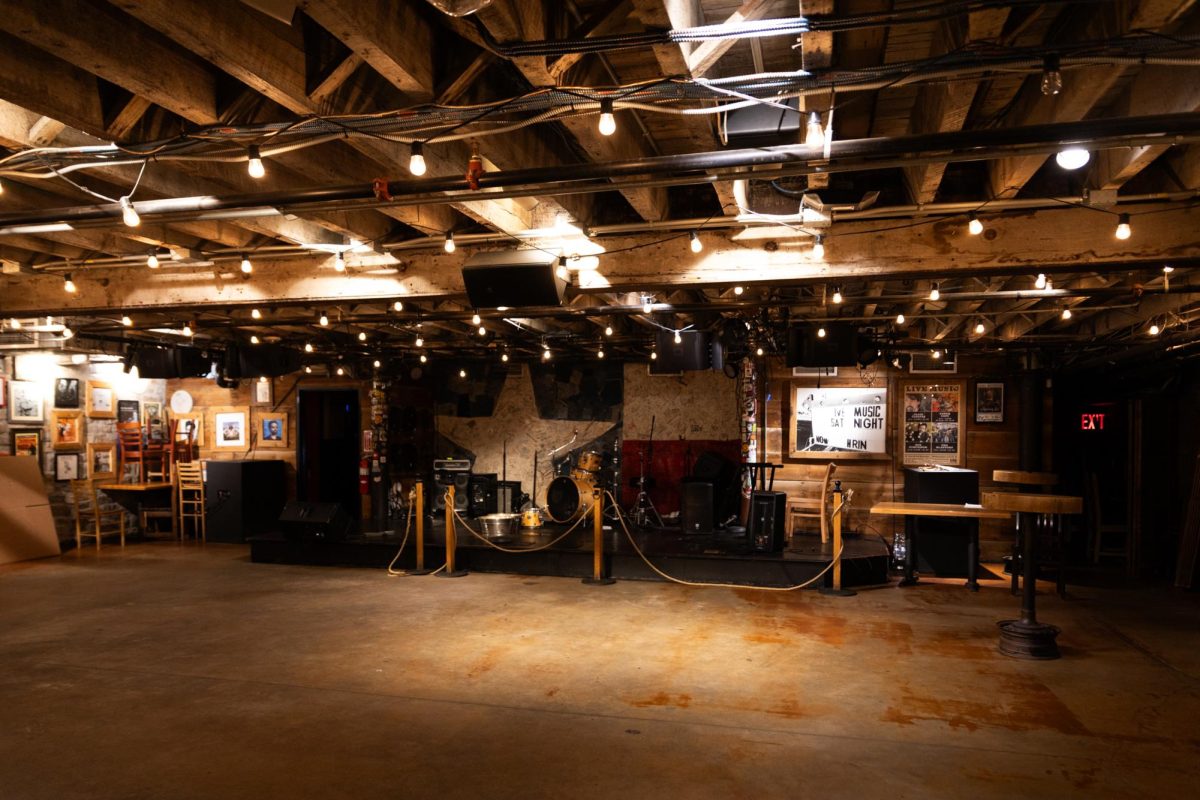Vesela Sretenovic’s office in The Phillips Collection is cluttered. Minimalist white floor-to-ceiling bookcases are crammed with volumes on art history, theory and criticism while her desk is piled high with papers.
The senior curator of modern and contemporary art stands, stretches her arms above her head and yawns.
“My old bones,” Sretenovic groans. “Just when I thought I’d be able to clean my office.”
Five years after the Dupont Circle neighborhood museum created her position, Sretenovic feels obligated to “demystify” her profession for people curious about the process of collaborating with artists.
“Art-goers are often shallow and don’t care about art or engage in a deeper way,” Sretenovic says. “It’s about fun and prestige for them, and not anything else.”
She then walks me through the museum, telling me about the museum’s latest display: an exhibit called “NO/Escape” that will run from Oct. 25 through March 8.
Three years in the making
Sretenovic has worked for the last three years with Bernardí Roig, a Mallorcan sculptor famous for his works that depict an interplay of light and lonely figures, to curate a collection of six of his sculptures. The exhibit is part of the museum’s “Intersections” project, which showcases the work of a contemporary artist twice a year.
“NO/Escape” is the longest any Intersections project has taken to plan by several months.
The two met years ago at a private collector’s art show, where Sretenovic asked Roig to consider displaying his work at The Phillips Collection. Now, she said, she can’t even remember when they became friends – it just happened along the way.
Roig, who Sretenovic called “a true Spaniard – a real Renaissance man” would fly to D.C. to visit the museum, map out its architecture and develop ideas for where he’d like his sculptures to fit. And in return, Sretenovic traveled to Spain to visit him.
Roig’s sculptures, which the museum will display for about four months, all feature white plaster figures posing in various forms of pain. The casts show stereotypical bourgeois middle class people who are, “fed up with life,” Sretenovic said.
“When I asked him why he only uses men, he says, ‘That’s the body I know,’” Sretenovic said, laughing.
Roig’s first model was his father. One is a friend and professional art critic. Another is Roig’s gardener. These are the people Roig knew well enough to ask to shave their entire bodies for the cast.
“It was very simple, you know, he would say, ‘Do me a favor. I’ll give you a drawing, you give me your body,’” Sretenovic said.
For months, the project was a give-and-take of grandiose ideas tempered by logistics. At the museum, Roig and Sretenovic would meet, talk and “explore the [architectural] possibilities,” she said. Ideas for where to place the figures would change and develop as “reality bit.”
Blinky P.
“OK,” Sretenovic tells me, wrapping her floor-length sweater tighter across her torso. “Let’s go for a walk.”
She brings me first to the entryway of French political cartoonist Honoré Daumier’s gallery space, where a cast of Roig’s dentist slouches behind a metal bar – pale belly distended, wrinkled pants unbuttoned – one hand held frozen in the shape of a gun behind his lower back. The sculpture is called “Blinky P.” in honor of the Viennese artist of the same name.
Other figures around the museum are known to staffers by their colloquial names, like “Pepe,” which depicts a man lugging 80 LED lights beside the gallery’s grand spiral staircase.
“The collector’s grandkids called it ‘Pepe,’ don’t ask me why,” Sretenovic says.
It’s the first time these figures – which Sretenovic calls chilling, disturbing and sometimes annoying – are being displayed in the entryway of a gallery, preventing museum-goers from entering the space. Another sculpture, a white cage placed strategically on the corner of 21st and Q streets, makes “NO/Escape” more literal.
“The way he works is like a movie director or set designer,” she said.
That, Sretenovic says, is what “Intersections” is about: manipulating the intimacy and coziness of the museum’s architecture to tell a story unique to the artist’s sculptures. In this case, Roig’s story tells one of isolation.
“There’s intent yet inability… it’s this borderline of, ‘Yeah, actually, we can go in, if you want to,’ but it’s against the rules, you’re stopped,” she says. “People are stopping and thinking, ‘What’s this about?’ Art is being responsive, with love or hate – it’s a choice.”
Across the hardwood hallway, Roig’s friend and art critic Fernando Castro screams at the public in Spanish through a black-and-white television screen flickering with age. A small white figure, his back to the public, leans into the screen.
There is no translation for the speech, and Sretenovic has not yet decided if the museum will include one.
“It’s pretty blunt, apparently, saying ‘You’re stupid, you’re an idiot,’” Sretenovic says with a laugh. “Language is certainly not innocent.”
A career as a contractor
She leads me next to the covered bridge that connects two of the museum’s brick buildings. There, several feet beyond the bridge’s impressive window that looks onto 21st Street, is another of Roig’s sculptures: a white rectangular beam pinning a plaster man’s belly against the brick wall. Inches below him, a foot-long LED light glows.
It was one of the most technically challenging sculptures the museum installed, Sretenovic says. While Roig made it level – “it was, to the millimeter, perfect” – the installation team initially drilled it crooked into the side of the Phillips Collection.
“He was losing his mind,” Stretenovic says.
Another of his sculptures depicts a man hunkered toward the railing of a second-floor balcony. Aside from posing technical problems, like how to hoist, secure and install the piece without breaking it, the sculpture caused alarm in the Dupont neighborhood.
To address those concerns, the museum had to send a letter to a neighborhood group with construction updates, including the temporary closure of several alleyways.
“[We had to say] ‘No, we haven’t actually hung him from the side of the building. And, no, he’s not jumping.’ These nutcases are walking around wondering if we’ve hung a real person from the building,” she says, rolling her eyes behind a pair of thin, black-tipped glasses.
Sretenovic worked through so many logistical details to both protect the historic building and Roig’s vision for the exhibit that she says her next career should be as a contractor.
Problems like these are unique to The Phillips Collection: Because the museum doesn’t typically display exhibits outside, it doesn’t have the infrastructure for easy installation of life-size sculptures. The last Intersections project, a series of watercolor paintings by D.C.-based artist Jean Meisel, featured 50 canvases the size of postage stamps.
Standing outside the museum, Sretenovic regards Roig’s statue balcony, partially hidden behind several tree branches.
“I can’t wait for the winter,” she says. “It’ll be so nice with snow.”







